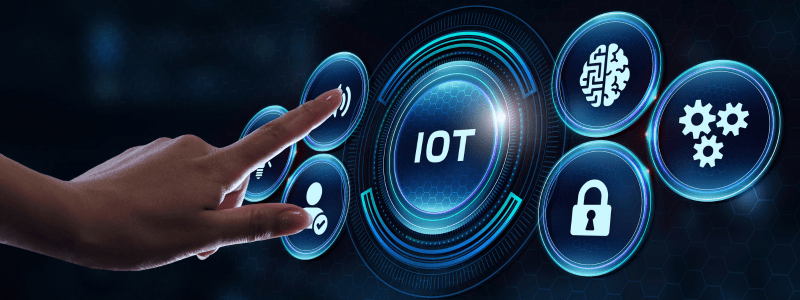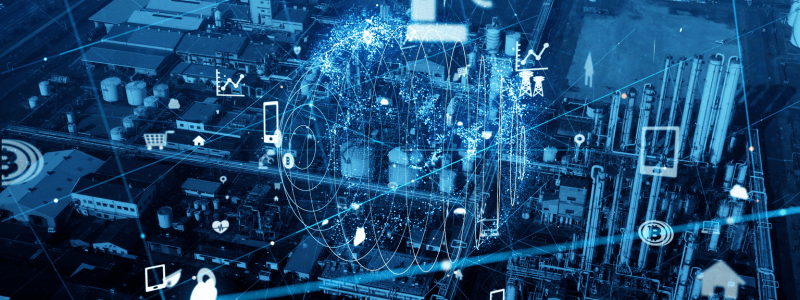
The Internet of Things (IoT) is revolutionizing the way we live, work, and interact with the world around us. At its core, IoT refers to a network of interconnected devices that communicate with each other and exchange data over the Internet. These devices range from everyday household items to advanced industrial machinery, all equipped with sensors, software, and other technologies that enable them to collect and share data.
The Evolution of IoT
Early Beginnings
The concept of IoT dates back to the early 1980s when the first internet-connected appliance, a Coca-Cola vending machine at Carnegie Mellon University, was created. This machine could report its inventory and whether newly loaded drinks were cold.
Modern Development
The term “Internet of Things” was coined by Kevin Ashton in 1999 during his work at Procter & Gamble. Since then, IoT has evolved significantly, driven by advancements in wireless communication, sensor technologies, and data analytics.
How IoT Works
Components of IoT
- Sensors and Actuators: These are the primary devices that collect data from the environment or perform actions based on received commands.
- Connectivity: Devices need to be connected to each other and the internet through various communication protocols like Wi-Fi, Bluetooth, Zigbee, and cellular networks.
- Data Processing: The collected data is processed, either on the device itself or sent to centralized servers or cloud platforms for analysis.
- User Interface: Users interact with IoT systems through applications that provide insights, control mechanisms, and reports based on the processed data.
Data Flow in IoT
- Data Collection: Sensors gather data from the environment.
- Data Transmission: Data is transmitted to central processing units or cloud servers.
- Data Analysis: Advanced algorithms and machine learning models analyze the data.
- Decision Making: Based on the analysis, decisions are made, which may trigger specific actions.
- User Interaction: Users receive notifications, insights, or alerts and can control devices remotely.
Applications of IoT
Smart Homes
IoT enables the creation of smart homes where appliances like refrigerators, thermostats, lighting systems, and security cameras are interconnected. These devices can be controlled remotely, offering convenience, security, and energy efficiency.
Healthcare
In healthcare, IoT devices such as wearable fitness trackers, smart medical devices, and remote monitoring systems help track patient health in real time, improve diagnosis, and enhance treatment outcomes.
Industrial IoT (IIoT)
Industries use IoT for predictive maintenance, optimizing operations, and improving safety. IIoT involves the integration of sensors in machinery, which helps in monitoring performance, predicting failures, and reducing downtime.
Transportation
IoT in transportation enhances vehicle-to-vehicle (V2V) and vehicle-to-infrastructure (V2I) communication. This leads to improved traffic management, reduced accidents, and efficient logistics operations through real-time tracking of goods.
Agriculture
Smart farming with IoT involves the use of sensors to monitor soil moisture, weather conditions, and crop health. This data-driven approach helps farmers make informed decisions, optimize resource use, and increase yields.
Benefits of IoT
- Enhanced Efficiency: IoT streamlines processes by providing real-time data and automation, leading to increased efficiency and reduced human intervention.
- Cost Savings: By enabling predictive maintenance and efficient resource management, IoT helps reduce operational costs and prevent costly downtime.
- Improved Quality of Life: Smart homes, healthcare devices, and other IoT applications enhance the quality of life by providing convenience, safety, and better health outcomes.
- Data-Driven Insights: IoT generates vast amounts of data that can be analyzed to gain insights, improve decision-making, and drive innovation across various sectors.
Challenges of IoT
- Security Concerns: With numerous devices connected to the internet, IoT systems are vulnerable to cyber-attacks, data breaches, and unauthorized access. Ensuring robust security measures is crucial.
- Privacy Issues: The collection and sharing of data by IoT devices raise privacy concerns. Users need assurance that their data is protected and used ethically.
- Interoperability: The lack of standardization and compatibility among different IoT devices and platforms can hinder seamless integration and communication.
- Scalability: Managing and maintaining a large number of interconnected devices can be challenging. IoT systems need to be scalable to accommodate future growth.
The Future of IoT

- 5G Connectivity: The advent of 5G technology promises to enhance IoT capabilities by providing faster data transmission, lower latency, and greater capacity to connect multiple devices simultaneously.
- Edge Computing: Edge computing involves processing data closer to the source rather than relying on centralized cloud servers. This approach reduces latency and bandwidth usage, making IoT systems more efficient and responsive.
- Artificial Intelligence (AI) Integration: Combining AI with IoT allows for advanced data analysis, predictive analytics, and autonomous decision-making. AI-powered IoT systems can learn from data, adapt to changing conditions, and optimize performance.
- Expansion into New Sectors: IoT is expected to expand into new areas such as smart cities, environmental monitoring, and energy management. These applications will further enhance urban living, sustainability, and resource conservation.
Conclusion
The Internet of Things is a transformative technology that connects the physical and digital worlds, offering numerous benefits across various sectors. While challenges such as security and privacy need to be addressed, the potential of IoT to improve efficiency, reduce costs, and enhance the quality of life is immense. As technology advances and innovations emerge, IoT will continue to shape our future in unprecedented ways. Embracing IoT and understanding its implications is essential for businesses, individuals, and society as a whole to harness its full potential.
For more information on how to protect your IoT devices, be sure to read our detailed article on Cybersecurity: Protecting Your Digital Life.
